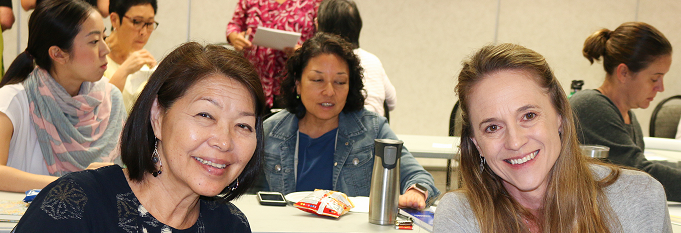504 MODIFICATION PLAN
An individual education plan that modifies what the student is expected to demonstrate due to a disability. Section 504 of the Rehabilitation Act protects individuals with disabilities from discrimination due to disability by recipients of federal financial assistance. A 504 Modification Plan may include changes in instructional level, content, and performance criteria, may include changes in test format and includes alternate assessments.
ACCOMMODATIONS
Techniques and materials that may help children with reading and writing difficulties to complete regular classroom curriculum. Examples: books on tape for reading or use of a note taker or word processor for writing.
ACCOMMODATIONS FOR TESTING
To provide changes in how tests are administered that does not substantially alter what the tests measure. Example: changes in presentation format, response format, test setting or test timing.
AUDITORY DISCRIMINATION
The ability to perceive the difference between sounds or sequences of sound. Example: the /p/ in nap as compared with /b/ in nab.
BLENDING
The process of combining sounds (phonemes) ina word to make a whole word.
COMPREHENSIVE EVALUATION
A comprehensive series of tests administered by one or more testers that determines the source of a reading difficulty and outlines effective strategies for remediation.
DECODING
The process of associating letters (graphemes) with their corresponding sounds (phonemes) and blending the sounds into a syllable or word in order to read unknown words.
DIAGNOSTICIAN
A professional, often a psychologist, trained to analyze, diagnose and provide recommendations about an individual’s specific areas of weakness or strength using diagnostic achievement tests.
ENCODING
The process of segmenting the sounds (phonemes) of a word or syllable and associating them with their corresponding letters (graphemes) to spell words.
EXPRESSIVE CHANNEL
The visual, auditory, and kinesthetic/tactile channels that enable the perception and processing of out-going stimuli.
EXPRESSIVE LANGUAGE
The ability to communicate with others through speaking, writing and other visual and non-verbal means.
FIGURATIVE LANGUAGE
Language that uses word pictures to compare or describe, and that is not meant to be taken literally.
FLUENT
The speed at which a person reads. Reading rapidly without needing to stop and identify (decode) a word.
INDIVIDUALIZED EDUCATIONAL PLAN (IEP)
A plan developed by a multidisciplinary team including the parents of the student to help the student with a disability. An IEP outlines educational goals, specific services that will be offered to help a student achieve those goals, and a plan for how and when a student’s progress will be assessed.
LOW FRUSTRATION TOLERANCE
The inability to withstand much frustration without either blowing up or withdrawing.
MORPHEME
The smallest units of speech that convey meaning.
MORPHOLOGY
The study of meaningful units of language (morphemes) and how they are combined to form a word. Morphemes include base words, roots, prefixes and suffixes.
MULTI-SENSORY
An approach to learning that involves more than one sense. Example: Simultaneously tracing a letter while accurately producing the letter’s name and sound.
MULTI-SENSORY STRUCTURED LANGUAGE METHOD
Generally, multi-sensory teaching methods use many sensory channels for learning sounds (phonemes) simultaneously or within the same lesson. This may be referred to as VAKT, or visual, auditory, kinesthetic/tactile teaching.
NEUROLOGICAL
Referring to the brain and central nervous system, especially in relation to its structures, functions and abnormalities.
ORTON-GILLINGHAM
Orton-Gillingham is an approach to teaching reading, writing and spelling that is, multi-sensory, structured, sequential, cumulative, cognitive, and flexible.
PHONEME
The smallest unit of speech-sound that can be combined with other speech- sounds to form words. Example: the word “cat” contains three phonemes: /k/, /a/, and /t/.
PHONEMIC AWARENESS
The understanding that spoken words and syllables are composed of a specific sequence of individual speech sounds.
PHONOLOGICAL AWARENESS
The ability to hear similarities and differences among phonemes, and to perceive syllables and the number and order of sounds within a syllable. Strong phonological awareness results in the ability to rhyme, to list words that begin and end with the same sound, to break words into individual phonemes, and to blend phonemes together to make a familiar word. Phonological awareness is essential for learning to read.
RECEPTIVE CHANNELS
The visual, auditory, and kinesthetic/tactile channels that enable the perception and processing of in-coming stimuli.
RECEPTIVE LANGUAGE
The ability to comprehend the spoken word.
REMEDIAL PROGRAM
A program designed to provide instruction and practice in skills that are weak or nonexistent in an effort to develop/strengthen these skills.
REMEDIATION
Process by which an individual receives instruction and practice in skills that are weak or nonexistent in an effort to develop/strengthen these skills.
SEGMENTING
Breaking words into syllables and sounds.
SEQUENCING
Remembering a series in its proper order, such as sounds that make up a word, letters in a word, days of the week, months of the year and directions involving more than one action.
SPECIFIC LEARNING DISABILITY (SLD)
A disability category under IDEA; a disorder in one or more of the basic psychological processes involved in understanding or in using language, spoken or written, that may manifest itself in an imperfect ability to listen, think, speak, read, write, spell or to do mathematical calculations.
Share this page with your friends…



